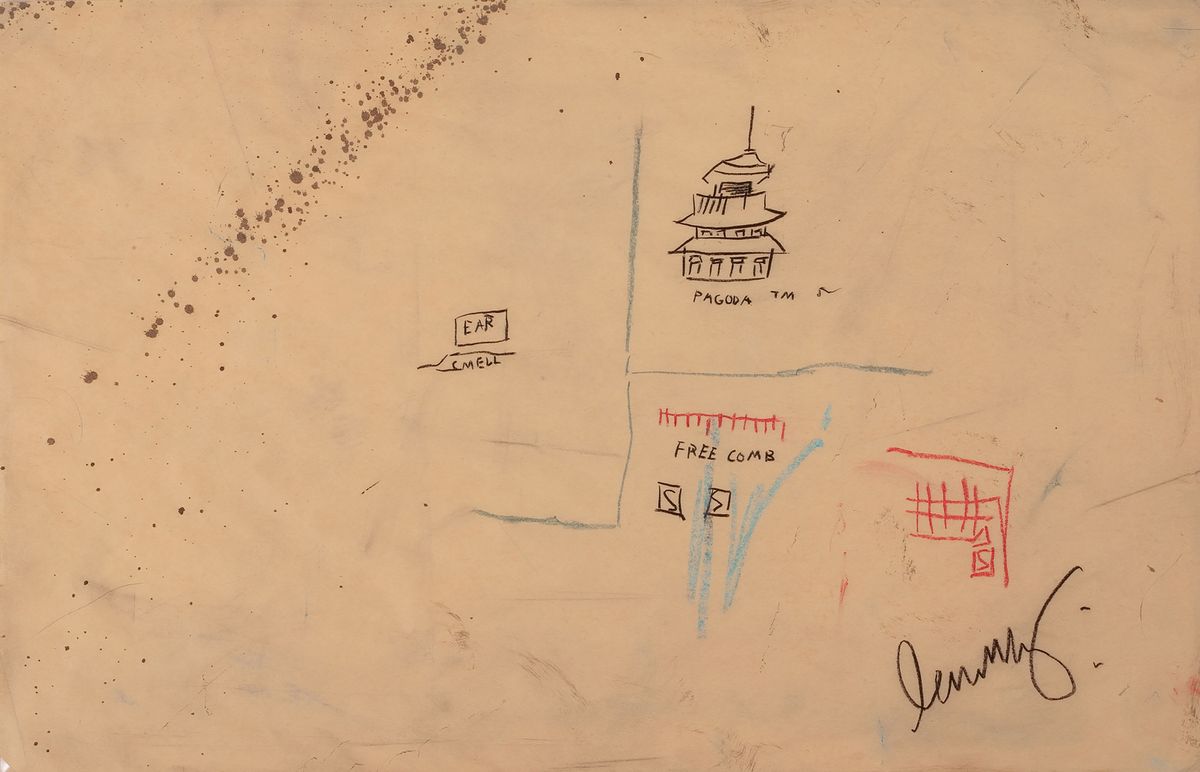First there was the burned Banksy, now the winning bidder of an NFT of a drawing by Jean-Michel Basquiat will be given the option to destroy the original.
The 1986 mixed media work on paper, Free Comb with Pagoda, was bought privately in 2015 for an undisclosed sum. It had previously been offered at Heritage Auctions in Texas in 2012 for $80,000-$120,000, but failed to find a home. An NFT of the work is now being sold on OpenSea marketplace, where bidding starts at one ethereum (the equivalent of around $2,500).
But, in a twist some will view as perverse, the physical drawing will be “deconstructed” on purchase, if the buyer so wishes, leaving the NFT as “the only remaining form” of the Basquiat work, which was authenticated by the late artist’s foundation in 2002.
The auction is sponsored by Daystrom, the self-described “digital provocateurs” behind the online bank the late singer David Bowie launched in 2000. In a statement online, the anonymous founders of Daystrom say: “Value has become increasingly fungible, diluted and unstable in our evolving metaverse and there’s a tremendous spike in user demand for exclusivity. NFT assets provide this exclusivity and create an entirely new online value system that was previously unimaginable.”
According to Daystrom, the transaction, which will be stamped on the Ethereum blockchain, will “memorialise ownership” as well as “reproduction and IP rights that will be sold to the highest bidder in perpetuity”—though the consensus is that buying an NFT, much like a physical work of art, does not confer copyright. Licensing intellectual property rights is possible, though legally tricky. The potential destruction also raises issues about the artist's moral rights.
Whether destroying the original Basquiat helps ensure its eternal authenticity on the blockchain remains to be seen. In the meantime, it is hard to view its “deconstruction” as anything but iconoclasm.


